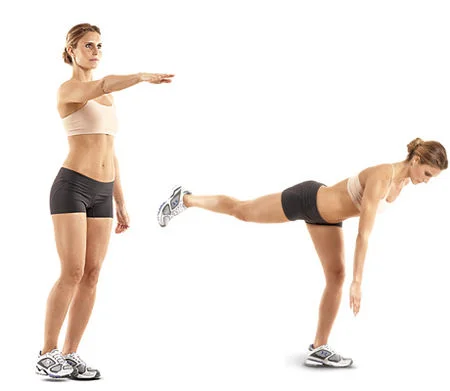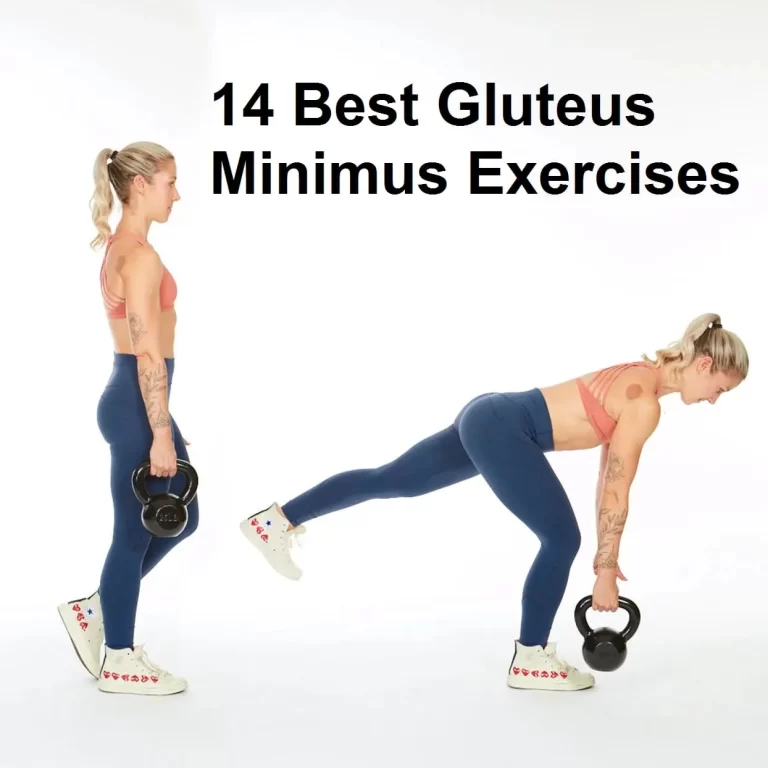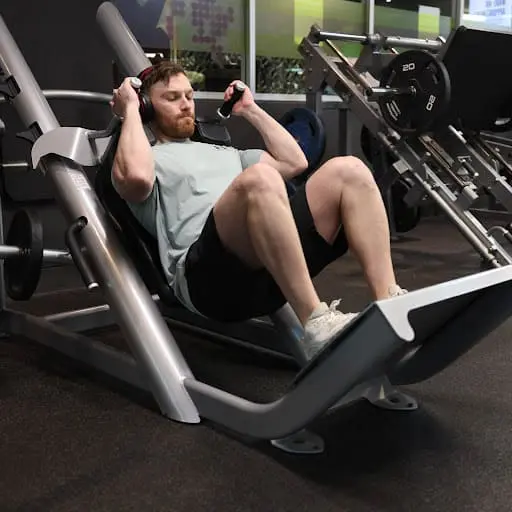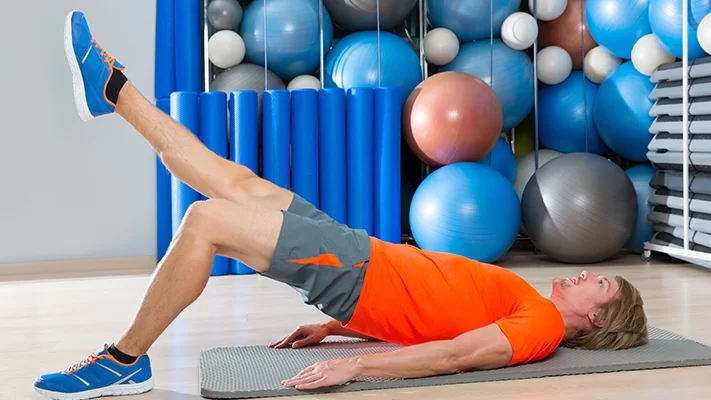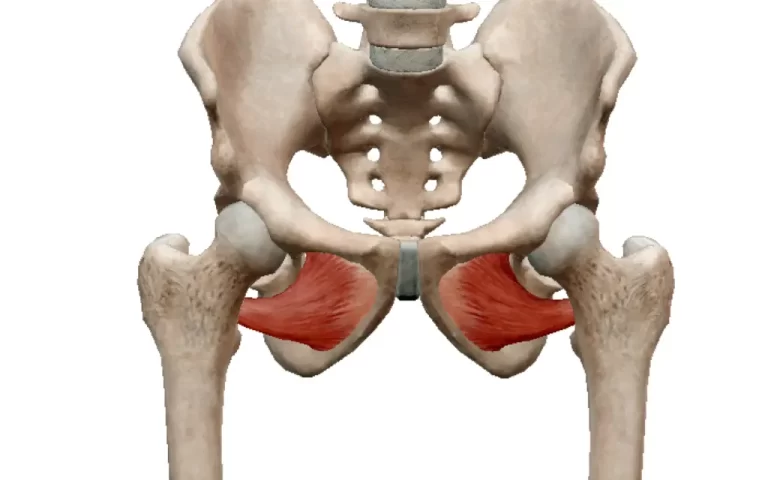13 Examples of Anaerobic Exercises
Anaerobic exercises are intense, short-duration activities that primarily rely on energy sources within the muscles, rather than oxygen. These exercises aim to improve power, strength, and speed, and they often involve brief bursts of high-intensity effort.
Unlike aerobic exercises, which rely on a steady supply of oxygen, anaerobic activities push the body to work without sufficient oxygen, leading to the buildup of lactic acid.
What are Anaerobic Exercises?
Any workout that releases glucose into the bloodstream without the need for oxygen is considered anaerobic. These exercises are often rather intense and have a brief duration. The theory is that a large amount of energy is released in a brief amount of time, and there is a greater demand for oxygen than there is supply.
Anaerobic activities are motions and exercises that call for quick, high-energy bursts. Among them are:
- Weightlifting
- Jumping or jumping rope
- Sprinting
Anaerobic energy system:
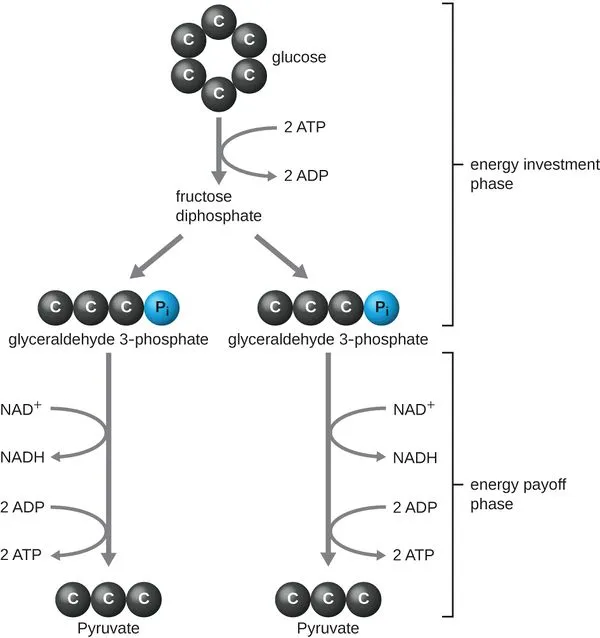
The body produces energy in three main ways. We refer to these physiological processes as energy systems.
- The short-duration energy of the alactic anaerobic system is 10 seconds.
- Lactic Anaerobic Systems (energy duration of 60–90 seconds, moderately short)
- (Long-term energy from oxygen breakdown hours) Aerobic System
The body uses the anaerobic energy system, also known as the lactic acid system, to produce ATP quickly. This energy source, which mostly runs on glucose, gives the muscles ten to thirty seconds of power during prolonged exertion. By using glycolysis instead of oxygen, the anaerobic system produces ATP quickly (see Figure 2). Anaerobic byproducts restrict the energy production of this energy system, despite its quick production.
Physiology of Anaerobic exercise:
In comparison to the aerobic energy system, the anaerobic energy system generates a lot less ATP and causes lactic acid to accumulate.
Anaerobic exercises include those that use fast-twitch muscles, such as powerlifting, high-intensity interval training (HIIT), and sprinting. An extended period of anaerobic activity results in a persistent rise in lactate and metabolic acidosis. The body’s capacity to use and eliminate lactate progressively becomes less effective as exertion increases. The term “anaerobic threshold” (AT) describes this changeover point.
- Frequent blood samples taken during a graded exercise programme can be used to evaluate blood lactate levels, which directly correlate to AT. The point on the depicted blood lactate readings when the curve abruptly slopes sharply upward is the AT. Frequent blood samples taken during a graded exercise programme can be used to evaluate blood lactate levels, which directly correlate to AT. The point on the depicted blood lactate readings when the curve abruptly slopes sharply upward is the AT. Other techniques include heart rate (HR)–related mathematical calculations and portal lactate analyzers.
- What restricts the system of anaerobic energy? The solution is complicated, and research is ongoing. According to recent studies, it also entails the well-known feeling of muscle acidosis and the body’s incapacity to utilize lactate to its fullest extent. Hydrogen ions raise the muscles’ acidity, which is what causes the burning feelings.
Blood glucose or muscle glycogen is transformed into pyruvate by the process of glycolysis; depending on the degree of activity, this molecule will either enter the mitochondria or be converted to lactate.
- Pyruvate enters the mitochondria at exercise intensities below the AT.
- The ability of mitochondrial respiration to complete the breakdown of carbohydrates is surpassed at exertion levels exceeding AT, converting pyruvate to lactate.
It is better to think of lactate formation as a byproduct of high-intensity exercise rather than a detrimental metabolic event. With this rising exercise intensity, there is a shift towards the recruitment of more fast-twitch muscle fibres with metabolic properties oriented towards glycolysis. Lactate oxidation is best suited metabolically for slow-twitch oxidative muscle fibres.
Anaerobic Capacity and Anaerobic Power:
- Anaerobic capacity: the highest amount of work produced during a brief, maximally intense physical exertion; this represents anaerobic glycolysis’s potential for energy production.
- The measurement of oxygen deficit during a constant load test, peak blood lactate, ergometric tests (all-out and constant load tests), and maximal oxygen debt test are the subcategories of maximal anaerobic capacity tests. The measurement of maximal oxygen debt is not valid and reliable enough to be used as an anaerobic capacity test.
- Anaerobic power: Anaerobic glycolysis and/or intramuscular high-energy phosphates (ATP and PCr) can provide the maximum amount of work per unit of time during an intense, brief physical exertion. Used for brief bursts of high-power production, this technology soon runs out of energy.
- Force-velocity tests, vertical leap tests, staircase tests, and cycle ergometer tests are examples of anaerobic power testing.
Advantages of Anaerobic Exercises:
Exercises that are anaerobic force your body and lungs to use the energy reserves found in your muscles. Among the advantages are:
- Boosts bone density and strength: Anaerobic exercise, such as strength training, can boost bone density and strength, lowering the risk of osteoporosis.
- Encourages weight maintenance: Anaerobic exercise can assist you in maintaining a healthy weight in addition to improving the body’s ability to tolerate lactic acid.
- Power Gain: It has the ability to give you more power. According to 2008 research on division 1A baseball players, players’ power increased by 15% on average over the course of the season when they performed eight 20- to 30-second wind sprints three days a week.
- Increases metabolism: Anaerobic exercise contributes to the growth and maintenance of lean muscle by increasing metabolism. During your next workout, you will burn more calories if you have more lean muscle. Exercise that is high-intensity is also believed to enhance calorie burn after a workout.
- Increases lactic threshold: Frequent exercise over an individual’s anaerobic threshold helps the body tolerate more lactic acid, raising the lactic threshold to the point at which an individual feels fatigued. This indicates that they can exercise harder and longer.
- Lowers risk of disease: High-intensity anaerobic exercises, such as bodyweight squats and pushups, can increase bone density and strength, which can lower the risk of coronary artery disease and diabetes.
- Building muscle mass and strength will help protect joints from damage by giving them more strength and resilience.
- Increases energy: Regular anaerobic exercise makes the body more capable of storing glycogen, which provides you with more energy for physical activities. This can help you become more athletic.
Anaerobic vs. Aerobic exercise
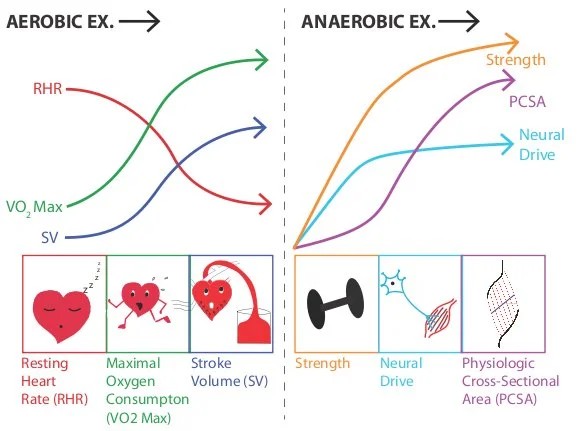
Anaerobic signifies “without oxygen,” whereas aerobic implies “with oxygen.” The fact that they both put your body through distinct challenges makes them both crucial for your general health.
Short, quick, high-intensity workouts that don’t require the body to consume oxygen as much as cardio- or aerobic-type exercises are known as anaerobic exercises. Anaerobic exercises, on the other hand, use the glucose already present in your muscles to break it down and provide energy. Your body stores energy from carbohydrates, fats, and oxygen in your breath for aerobic exercise.
Before switching to a different kind of exercise, you typically perform anaerobic exercises for ten to fifteen seconds. Depending on your physical capabilities, aerobic workouts are simple to perform for extended periods of time.
The boundary between anaerobic and aerobic activity is sometimes ambiguous. If you increase the intensity of your aerobic workout beyond what you can maintain, it may become anaerobic.
For instance, an excessively rapid pace will prevent a runner from maintaining a steady pace for an extended period of time, resulting in an anaerobic exercise instead of an aerobic one.
Another workout routine that alternates between anaerobic and aerobic activity is Crossfit. It blends the anaerobic exercise’s strength training with the aerobic exercise’s ability to burn fat.
Examples of Anaerobic Exercise
Intermittent periods of high exertion are known as anaerobic workouts. Typical anaerobic workouts consist of:
- Sprinting
- High-Intensity Interval Training (HIIT)
- Weightlifting
- Plyometric
- Ballistic Workout Training
- Rowing
- Bicycling
- Tabata
- Swimming
- Jumping Rope
- Battle Rope Training
- Boxing punches
- Crossfit
- Sprinting:

- When you sprint, you run as quickly as you can for a predetermined amount of time, usually 10 to 30 seconds.
- It works a variety of body muscles, including the core, hips, calves, quadriceps, and hamstrings.
- The greatest method to raise metabolism, enhance performance, lengthen endurance, and develop strength for sports like basketball, football, soccer, and track and field is to sprint.
- The National Institute of Health journal released research that highlights the advantages of sprinting.
- Enhances and maximises your VO2 max.
- Controls blood pressure,
- Lowers blood sugar,
- Strengthens the heart,
- Boosts endurance and stamina,
- Changes the composition of your body.
- An example of a sprint interval routine would be:
- A single sprinting session lasts for thirty minutes.
- Time spent sprinting: 15–30 seconds
- Six to eight rounds in total
- Every four to five rounds, take a rest.
- Calorie burn estimate: 300
- High-Intensity Interval Training (HIIT)
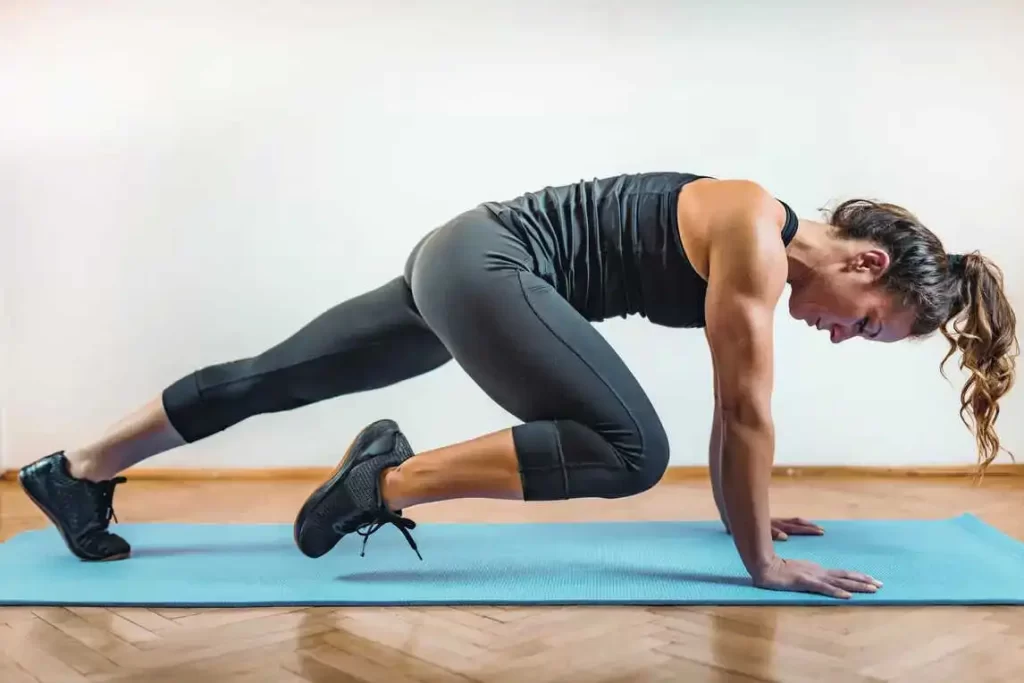
- Exercises that involve anaerobic high-intensity interval training (HIIT) are very desired since they work both the fast and slow-twitch muscle fibres. Anaerobic (HIIT) exercise is therefore beneficial for a full training effect. The amount of work required determines the advantages of anaerobic (HIT) exercise. The whole body benefits most from a big muscle mass’s maximum “effort,” such as that of the legs.
- A HIIT workout usually lasts between ten and thirty minutes.
- The brief activity can provide health advantages comparable to twice as much moderate-intensity exercise.
- The actual workout varies; however, it may involve body-weight exercises, riding, jumping rope, or running.
- For example, a high-intensity interval training (HIIT) session on a stationary exercise bike may involve pedalling at maximum speed against high resistance for 30 seconds, followed by several minutes of easy, moderate cycling with low resistance. One HIIT “round” or “repetition” would be this, and you would normally perform 4–6 repetitions in a single session.
- Depending on the activity you pick and the intensity of your workout, the precise length of time you spend exercising and recovering will change.
- There are several advantages to high-intensity interval training, including:
- It increases your ability to burn calories, speeds up your metabolism, helps you gain muscle while shedding fat, and increases stamina.
- Lose weight (if you cut back on calories).
- Develop your strength and agility.
- Boost lung and heart health.
- An example of an anaerobic HIIT routine:
- In 20 minutes, complete as many rounds as you can, pausing for two minutes between each round.
| Exercise | Activity | Rest |
| Burpees | 10 reps at 85-95% of your MHR | 30 seconds |
| Kneeling Jump | 10 reps at 90-95% of your MHR | 30 seconds |
| Pushups | 20-40 pushups in 30 sec. | 30 seconds |
| Squats | 20-40 squats in 30 sec. | 30 seconds |
| Mountain Climbing | 20-sec at 85-95% of your MHR | – |
- Weightlifting:
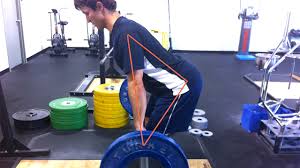
- One of the finest forms of anaerobic exercise that incorporates brief yet intense movements is weightlifting.
- One may ask how weight training fits into the definition of an anaerobic activity.
- You see, your body turns glycogen into energy and uses carbs as a fuel source to help you lift weights. Anaerobic exercise includes workouts like weightlifting since it doesn’t use oxygen for energy like cardio exercises do.
- Weightlifting can be a good choice for you if your objectives are to increase muscular mass, improve power, develop stronger muscles, and burn more calories.
- Here are a few weightlifting workout examples:
- Deadlift
- Squats
- Barbell Row
- Bench Press
- Overhead Press
- Clean and press
- Plyometric:

- Plyometric workouts are quick bursts of exercise that improve your body’s force and power production. They are a fantastic method to strengthen particular muscle areas, particularly your legs, and enhance your general athleticism.
- A variety of jumping exercises, including the high jump, vertical jump, and kneeling leap, are part of plyometric training. It is better suited for athletes, especially those who play netball, basketball, or soccer and wish to increase their strength, power, speed, endurance, and agility.
- An Example of a Plyometric Exercise:
- Spend 30 seconds quickly doing each exercise, with little to no pauses in between.
| Round 1 | Round 2 | Round 3 |
| Ankle Hops | Split Jump | Vertical Jumps |
| Squat Jump | Skater Jumps | Alternate Lunge Jump |
| Jumping Jacks | Broad Jump | Tuck Jump |
| Mountain Climbers | Plyo Pushups | Kneeling Squat Jump |
- Ballistic Workout Training:
- Another excellent example of an anaerobic workout is ballistic training. It consists of vigorous workouts that boost power and speed as well as enhance athleticism and sports performance.
- Enhancing neurological parameters such as recruitment of motor units, firing frequency, and intra- and inter-muscular coordination, as well as maximizing the acceleration phase and minimizing the deceleration phase of an object’s movement, are further benefits of this training.
- Exercises that include ballistic movements include leaping with weights and tossing medicine balls as forcefully and quickly as you can.
- Rowing:

- A great full-body workout that has both anaerobic and aerobic elements is rowing. It contributes to gains in speed, strength, power, and endurance.
- Rowing helps to improve body composition by working a variety of muscular groups across the body, particularly the back, biceps, and core.
- It is appropriate for both men and women, regardless of their fitness level. Therefore, you may add rowing to your anaerobic exercise regimen to increase bone density, build lean mass, and strengthen and tone your muscles.
- An example of rowing for 20 minutes to increase anaerobic fitness is:
- 20 minutes in length
- Exercise: row for 30 seconds at 85% to 95% of your maximal heart rate.
- Recover Time: One Minute
- Twelve rounds altogether
- Bicycling:
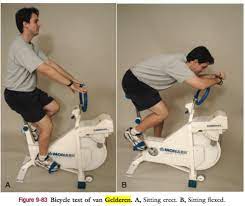
- Cycling is a workout that involves both anaerobic and aerobic phases. For instance, your body uses no oxygen to break down glucose for energy while you cycle at your utmost effort.
- Cycling is a fantastic method to improve metabolism and cardiovascular health. According to research, cycling lowers the incidence of cancer, improves strength and endurance, helps people lose weight, and lengthens their lives.
- An illustration of an anaerobic cycling exercise programme:
- 20 minutes in length
- Exercise: row for 30 seconds at 85% to 95% of your maximal heart rate.
- Recover Time: One Minute
- Twelve rounds altogether
- Tabata:
- Tabata is a type of high-intensity interval training (HIIT) in which you work for 20 seconds and then take ten seconds off. A tabata training session typically lasts 20 minutes, with each circuit lasting 4 minutes.
- The objective of this training programme is to maintain an increased heart rate for the duration of each set. To do this, you must exert yourself to the maximum extent feasible without going overboard and burning out before the exercise session ends.
- Tabata provides several health advantages, including increased maximum oxygen uptake (VO2max), fat loss acceleration, cardiovascular fitness, endurance, speed, and power.
- This is an example of a 20-minute tabata exercise:
| Round | 1 Min. | 2 Min. | 3 Min. | 4 Min. |
| 1 | Jumping Jacks | Mountain Climbing | Kneeling Leap | Flutter Step |
| 2 | Squat Jump | Push-Ups | Crunches | Shoulder Tap |
| 3 | Burpees | Shoulder Press | Leaping Division Squat | Leg lifts |
| 4 | High Knees | Kneeling Jump | Jumping Jacks | Leg Raises |
| 5 | Front Box Jump | Bicycle Crunches | Shoulder Tap | Flutter Kick |
- Swimming:

- Swimming contains both anaerobic and aerobic elements, much like rowing does.
- Your body cannot use oxygen as an energy source during anaerobic swimming; thus, it cannot meet the muscles’ need for oxygen.
- Swimming anaerobatically takes a lot of work and can last for two minutes or less at most.
- This kind of swimming raises your lactic threshold, improves muscle strength, speeds up your metabolism, and burns a lot of calories quickly.
- You can swim anaerobically for the necessary amount of time over small distances.
- Jumping rope:

- You may classify jumping rope as an anaerobic and aerobic exercise. Your workout intensity will determine this. Additionally, you should have to jump rope as quickly as you can without pausing to think about your breathing for it to be considered an anaerobic workout. It uses several body muscles at once, including the arms, legs, and core.
- There are several health advantages to jumping rope, such as increased VO2 max, decreased blood sugar, improved heart health, and weight loss.
- An instance of a jumping rope routine:
- 15 minutes in length
- Activity: 30 seconds (work as fast as you can).
- There are eight to ten sets.
- Recovering for 60 seconds in between sets
- Battle Rope Training:
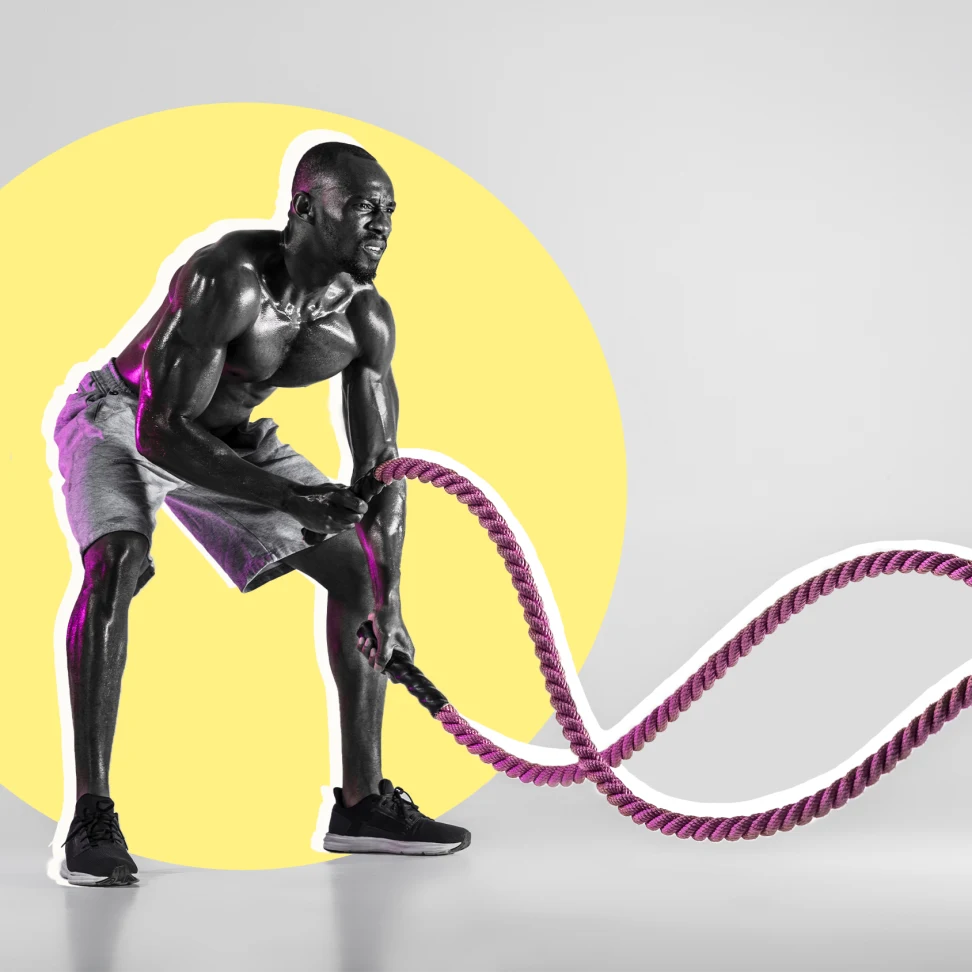
- Anaerobic and aerobic fitness are both enhanced by the combat rope exercise. It is a component of rigorous exercise regimens like HIIT and Crossfit.
- It supports several muscles in the body, particularly the arms, shoulders, and core.
- Battle rope is a tough workout that increases cardiovascular fitness, boosts your fitness level, and burns a lot of calories quickly.
- Nonetheless, to function well, it needs a reasonable amount of stamina and energy.
- A ten-minute combat rope exercise example might be:
- Exercise: 15 seconds at maximum effort
- 45 seconds of rest
- 10 rounds
- Boxing punches:

- Another excellent technique to increase both your anaerobic and aerobic fitness is to throw strong punches at the boxing bag.
- There are four types of punches used in boxing: the jab, hook, cross, and uppercut.
- Mostly employed for defense and counterattacks, the jab punch is a brief, rapid blow.
- You may strike your opponent’s head or body with a short, fast, and devastating cross punch.
- When delivered with great force, the uppercut punch is a very potent blow.
- The hook is a powerful punch that strikes the side of the jaw or neck by combining strength and speed in an arc.
- To increase your anaerobic fitness, you may throw all these punches on a boxing bag at maximal effort.
- Crossfit:
- Try Crossfit as well if you want to get the most out of your anaerobic fitness. Crossfit is a mix of endurance and strength training. It involves functional motions performed at high intensity that challenge your physical and mental boundaries.
- Crossfit includes a wide range of workouts that improve strength, endurance, speed, balance, and agility, such as plyometrics, sprinting, strength training, and high-intensity interval training.
- You may add really intense CrossFit workouts to your routine to enhance your anaerobic health. Holleyman, Daniel, Hammer, Santiago, and Omar are a few examples.
Examples of health-related research
- According to available data, HIIT can help overweight and obese people’s VO2 max and improve a few cardiometabolic risk factors.
- After 8 to 12 weeks of HIIT intervention, heart transplant recipients showed a substantial improvement in their peak blood pressure, heart rate, and VO2peak.
- Elderly people are more likely to have sarcopenia and frailty, which raises the possibility of impairment and loss of independence. Compared to other exercise regimens, high-intensity interval training (HIIT) can provide both strength and endurance advantages with less time commitment, making it a potentially effective intervention for frailty and sarcopenia.
- When type 2 diabetics participate in a 12-week HIIT programme together with dietary education, their cardiometabolic and quality of life metrics improve.
Anaerobic exercise safety tips
If an injury keeps you from exercising, you won’t be improving your fitness. When engaging in anaerobic activity, safety must always come first. Several broad recommendations consist of:
- Put on clothes that fit properly and won’t snag or catch on the exercise equipment.
- Choose sports shoes with plenty of tread, and replace them as necessary.
- Work under a trainer’s supervision until you are comfortable with your skills and knowledge.
- Use a spotter at all times while strength training.
- Drink plenty of water, especially if you’re exercising in the heat.
- Stretch to warm up before engaging in any vigorous exercises.
- If you are not feeling good, stop what you are doing.
Conclusion
Exercises that don’t require oxygen break down glucose for energy. Short-duration activities, including powerlifting, HIIT, and sprinting, are part of this programme.
Research has demonstrated the beneficial effects of anaerobic exercise on cardiovascular health, lipid profiles, and general quality of life.
Additionally, studies indicate that brief anaerobic exercise sessions might help lower body fat and boost metabolism. Athletes and fitness enthusiasts who wish to enhance their endurance, power, speed, agility, and strength should also consider anaerobic activities.
It is not appropriate for all levels of fitness, particularly for those who have cardiovascular disease, a history of accidents, or any other health concerns. Therefore, it is essential to speak with your physician or personal trainer prior to engaging in any kind of anaerobic activity.
FAQ
Which five situations are anaerobic?
Examples of Anaerobic Exercises:
Sprints on a bicycle.
High-intensity weight training
executing sprints.
HITT stands for high-intensity interval training.
swimming brief distances.
Yoga.
What type of fitness is anaerobic?
While anaerobic activity consumes a different type of energy quickly and instantly, it is similar to aerobic exercise. Strength training, circuit training, weightlifting, and high-intensity interval training (HIIT) are examples of anaerobic workouts. There are many health benefits to this type of exercise.
Which sports lack oxygen?
Anaerobic sports like boxing, wrestling, basketball, hockey, volleyball, and basketball have high levels of anaerobic power and capacity. Sports that are mostly aerobic, including football, rowing, and long-distance running, show fewer quantities of anaerobic energy generation.
How long does anaerobic training take?
The length of a workout typically varies significantly between these two zones. While aerobic heart rate zones are beneficial if you can stay in them for at least 40 minutes, anaerobic activities are short, strong bursts of activity that can last anywhere from 90 to 120 seconds.
Does anaerobic exercise burn fat?
While anaerobic exercises like HIIT can be more beneficial for fat reduction, both aerobic and anaerobic exercises have a role in a well-rounded fitness regimen. Remember that overall weight reduction is not a reliable measure of progress if you’re using HIIT and strength training.
Can I do anaerobic exercise every day?
Physicians advise beginning with two weekly 15-minute interval training sessions (such as the one above) and increasing the frequency based on your body’s capacity. To ensure that your body properly recovers, make sure you take at least one day off between anaerobic training sessions.
How much is anaerobic per day?
You may incorporate anaerobic activities into your weekly exercise regimen with the guidance of a licenced fitness expert and a doctor’s consent. Limit the number of days you spend doing anaerobic activity, such as HIIT exercises, to two or three per week, and always give yourself at least one full day to recuperate in between.
Reference
- “What Is Anaerobic Exercise?” WebMD, 8 Apr. 2021, www.webmd.com/fitness-exercise/what-is-anaerobic-exercise.
- Garone, Sarah. “Look Ma, No Oxygen! The Surprising Benefits of Anaerobic Exercise.” Greatist, 28 Mar. 2023, greatist.com/fitness/anaerobic-exercise#safety.
- “Anaerobic Exercise.” Physiopedia, www.physio-pedia.com/Anaerobic_Exercise.
- Akram, Murshid. “13 Best Examples of Anaerobic Exercise – the Fitness Phantom.” The Fitness Phantom, 8 Sept. 2022, thefitnessphantom.com/examples-of-anaerobic-exercise#4_Plyometric.


